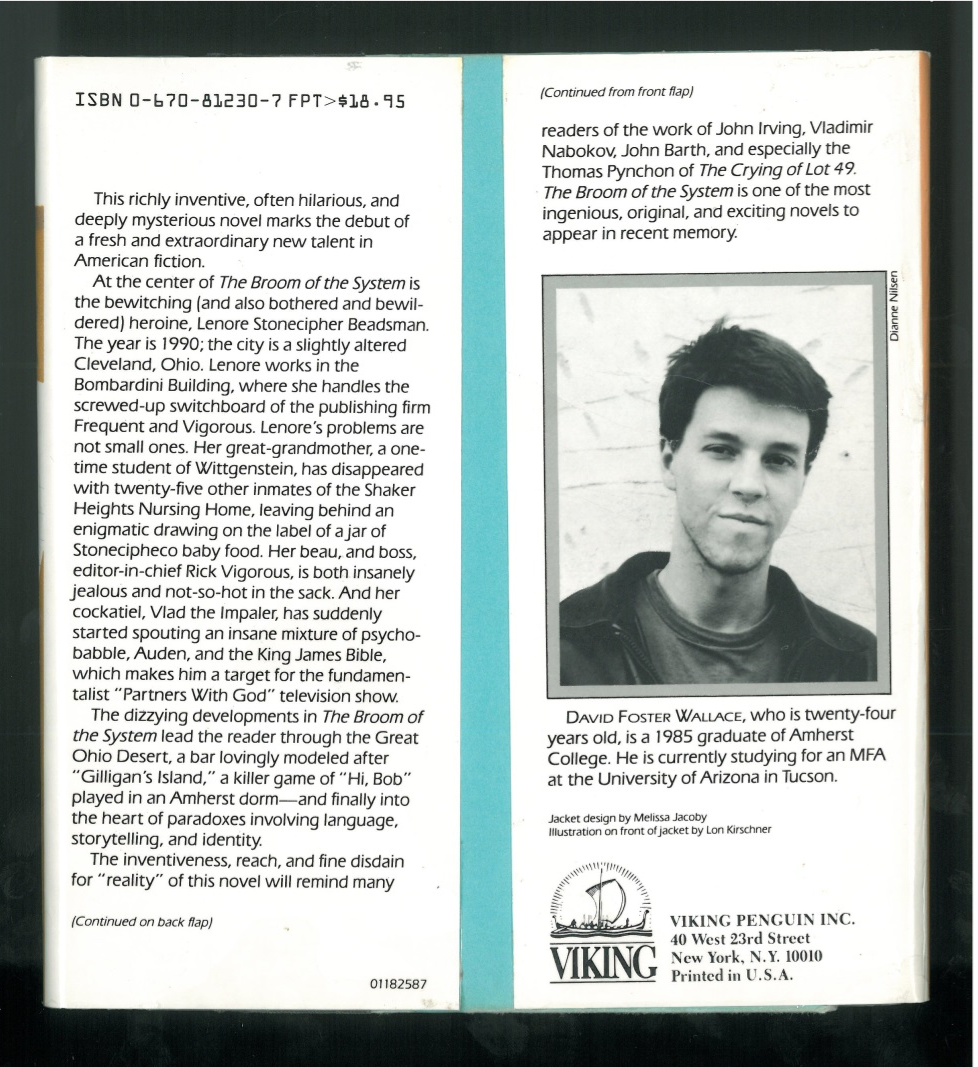RANDOM FACTOIDS /1 : Zen Buddhism and Pynchon
Roger Federer, 12 Sept. 2014, Geneva. REUTERS/Denis Balihouse.
![]()
-Ariane Mak
Here’s a (way too) small selection of some interesting or funny things which were said during the Paris conference, during presentations or in their margins.
Zen Buddhism and Tennis
Strangely enough, we learned from Christopher Kocela that Zen Buddhism was one of Wallace’s favourite comparisons when talking about sports.
In “Derivative Sport in Tornado Alley”, Wallace mentions “my Zen-like acceptance of things as they were on court”. In “A Supposedly Fun Thing I’ll Never Do Again”, he says that “3P Winston and I have both reached that level of almost Zen-like Ping-Pong mastery where the game kind of plays us”. And what about Coach Schtitt’s advice to see the net and the opponent as “allies in the quest for self transcendence”?
We knew already from reading D.T. Max’s biography that DFW had abruptly left his two-week meditation retreat with Zen Master Thich Nhat Hahn in Plum village, France, supposedly because he was unsatisfied with the food (!).
But Christopher Kocela’s paper brought new light on the relationship between meditation and Wallace’s writing practice. By showing the importance of Buddhist themes on Wallace’s earliest journalism and on IJ, he also challenged the idea that Wallace’s fiction had shifted from a focus on the critique of irony (“E Unibus Pluram”) to a focus on commitment and belief (This is Water).
“The – the – the “P” guy comes into mind”
“I bristle sometimes at getting compared to […] these classic postmodern guys. The - the – the “P” guy comes into mind. I won’t even say his name”, said Wallace in 1997.
How indeed did Thomas Pynchon become the recurring postmodern model to which Wallace was almost systematically compared? According to numerous reviewers, The Broom of the System held many resemblances to The Crying of Lot 49 and Infinite Jest was hailed as a second Gravity’s Rainbow.
Tore Andersen provided a fascinating answer to this question.
He showed that these Pynchon-comparisons were born from Wallace’s publishers’ presentations of his books to readers and marketing strategies. In other words, they are to be traced to the paratexts (Genette)- blurbs, book descriptions, dust jackets- of Wallace’s work. 



Many thanks to Tore Andersen for sharing these pictures with us!
One example was particularly telling: the strong similarities between Michiko Kakutani’s review of the Broom of the System, and Viking’s description of the book.
-Michiko Kakutani’s review of The Broom of the System, The New York Times, Dec 1986.
-Viking’s dust jacket of The Broom of the System.
Viking’s description of the Broom of the System
In that sense Tore Andersen contended that the paratext had acted as blinkers.
Indeed Wallace wrote to Franzen that he was actually glad everyone focused on Pynchon because it meant that people wouldn’t see how much the book took from DeLillo. To Tore Andersen, the DeLillo comparisons were in fact delayed by Pynchon’s massive presence in the (editorial) paratext of Wallace’s work.
He concluded with a spot on remark on the fact that since Wallace’s death in 2008, Pynchon had been almost completely absent of the paratext (with no more mention of him on the blurbs and book covers of The Pale King, Both Flesh and Not or This is Water).
To me, Tore’s brilliant paper pertains to a new trend in Wallace studies which favours the analysis of paratext but also “avant texte” (drafts and marginalia) to offer a new oblique reading of DFW’s work.
More “random factoids” to come.
-Ariane Mak
Download Tore Andersen's paper here: t_andersen_talk.docx
Download Tore Andersen's slides here: t_andersen_slides.pptx
| < Prev | Next > |
|---|






